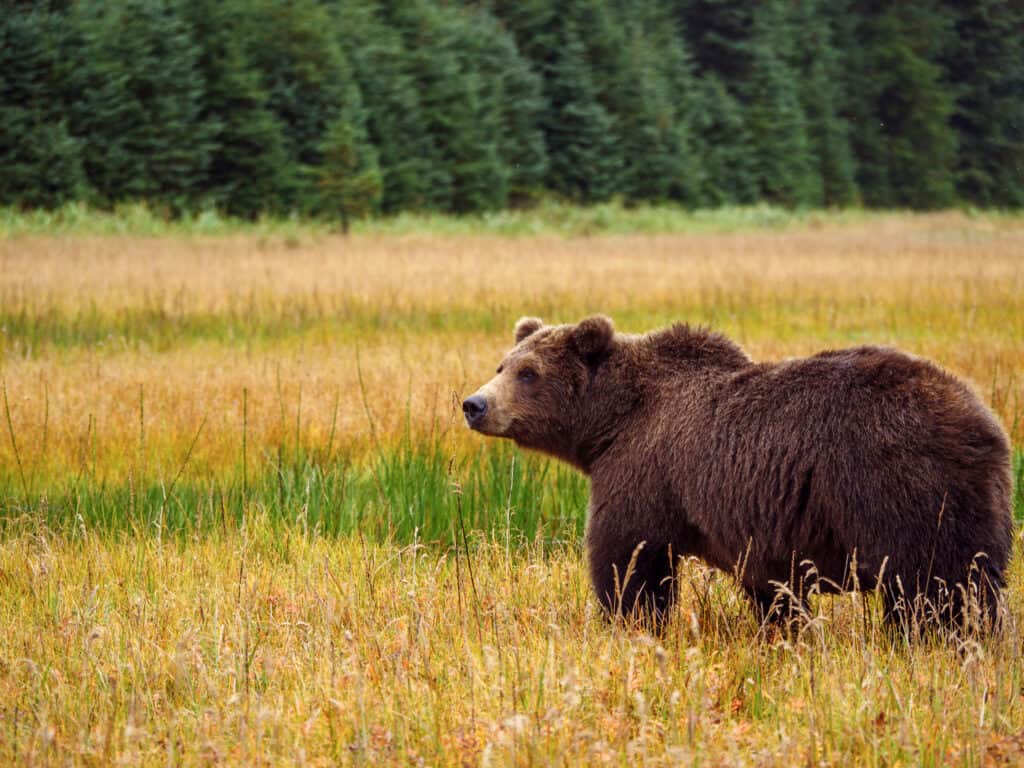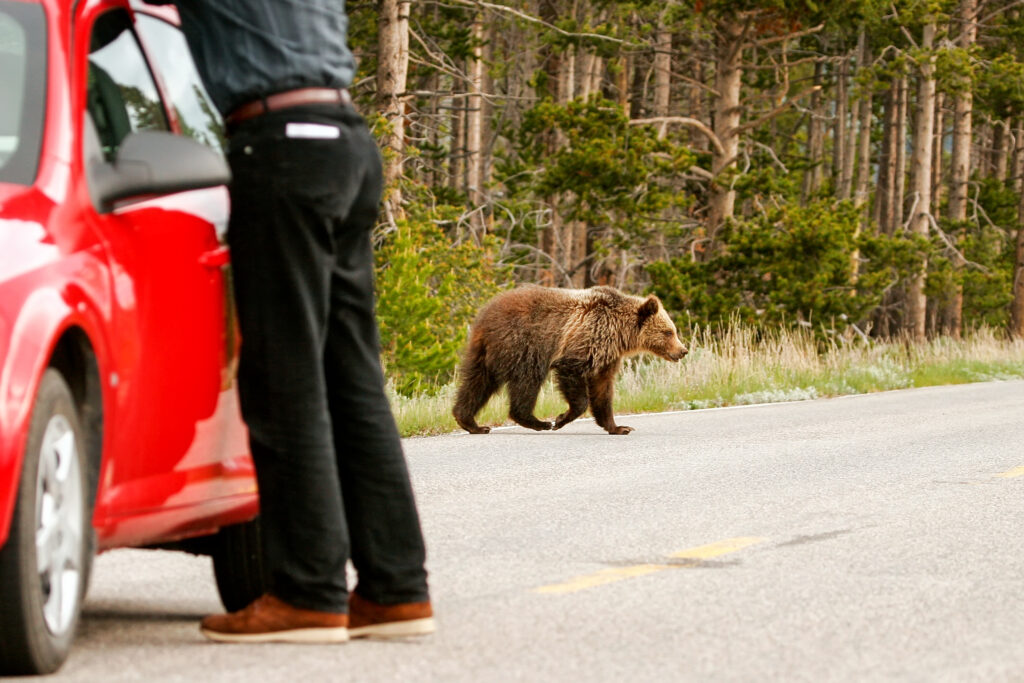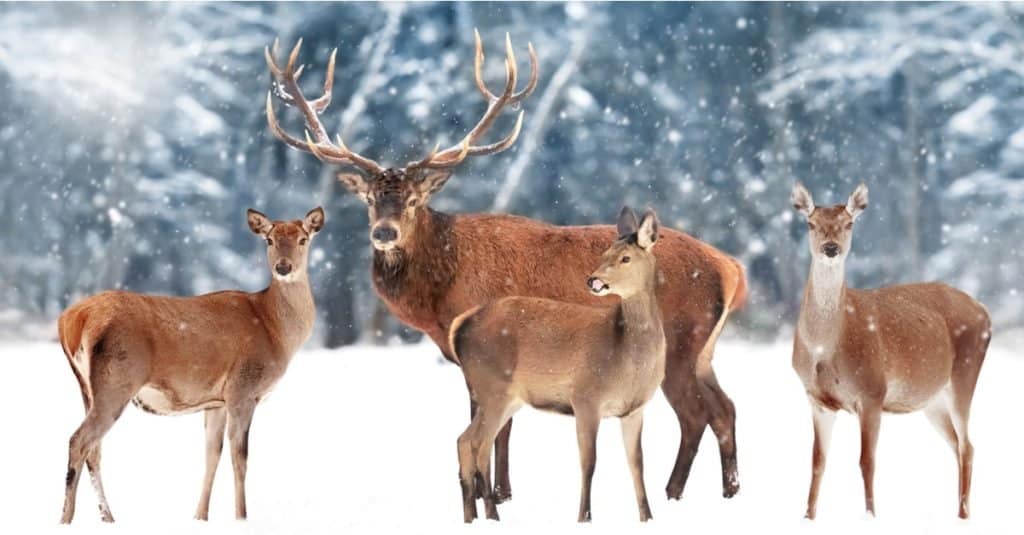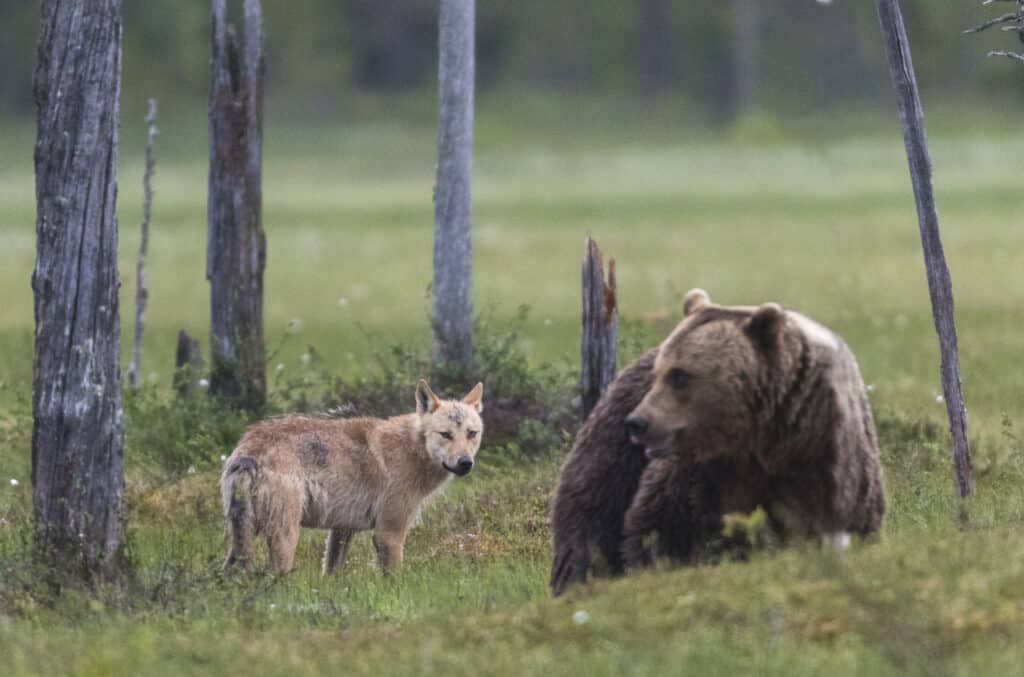
Grizzlies are often attracted to calves who are easier prey than their mothers.
©Pat de la Harpe/Shutterstock.com
The awesome grizzly bear is one of the many attractions at Yellowstone National Park. The population here is more than 700 (estimated) and appears to be stable. Visitors to the park need to be aware of how to keep themselves safe when viewing the bears. There is a report of one person being injured by a grizzly in 2021.
The bear in this vid, however, seems to be more interested in an elk and her calves. We hear the distressed calls of some adult elks and a calf as they run toward a raised viewing area and walkway. At first, it is not easy to see what is causing the panic but then you can catch sight of a bear pursuing them. The grizzly is slowed down a little as they slip into the river but they soon recover and carry on the rampage.

Visitors to Yellowstone National Park must exercise caution when encountering grizzlies.
©Don Mammoser/Shutterstock.com
There is a worrying moment when the bear sees the group of humans and pauses – perhaps weighing up whether they are a threat or a potential meal! But, soon the elk chase is back on and the bear bounds over the walkway to continue the chase.
Elk and Their Predators
There are more elk than any other large mammal in Yellowstone and they are an important part of the ecosystem. In the summer, it is estimated that there are between 10,000 and 20,000 in the park in six to seven herds. As well as providing a source of meat for bears, as we see here, they are hunted by mountain lions and wolves. They are also an important source of food for scavengers such as bald eagles and coyotes.
Elk are large herbivores and can consume up to 20 pounds of vegetation each day. They are also fast – an adult male can run at up to 40mph. Calves, however, are not as fast and are therefore more likely to get attacked by bears and other predators.

Elk eat native grasses year-round and tree bark during the winter.
©Delbars/Shutterstock.com
Elk Behavior
When they are not getting chased by bears, elk are usually eating. An elk has a four-chambered stomach and grazes grass in the morning and in the evening. Then, they rest in a sheltered place as they digest it. Their diet includes native grasses all year round but they will also eat tree bark in the winter, and nibble on tree sprouts in the summer.
They are social animals who live in groups of up to 400 individuals. Usually, adult males and females live separately and the female groups tend to be larger. Adult males will also sometimes live alone. Female herds can also include young or old bulls who are not aggressive. The elk we see here may have become separated from their larger group. Hopefully, they were soon reunited!

Grey wolves and grizzlies are primary predators in Yellowstone National Park.
©iStock.com/Mats Lindberg
Other Predators of Elk in Yellowstone
Grizzly bears have been the bane of the elk’s existence in Yellowstone for quite a while – until the late 1990s to be specific. Their main predator had been hunted out of existence – allowing them to alter their normal behavior and feed on tree sprouts along the park’s rivers. The result? No new growth of willows and aspen among other ecological changes. So, after 70 years, the elk’s primary preditor was reintroduced into Yellowstone when 15 grey wolves were imported from Canada. Now, there are around 300 grey wolves in the park and it seems that they were a keystone species after all.
The park has a complete set of predators and prey which has greatly affected the environment. Willows, aspens, and cottonwoods grow, once again, along the river, shading the waters to the cool temperatures that attract trout. Migratory birds are attracted to the new trees, beavers are attracted to the area to cut the trees down – forming marshes that attract otters, muskrats, and ducks. It’s easy to feel sorry for the elk and their calves – but all animals and all of nature depend on each other to make life on earth a bounty.
Interested in More Grizzly Action?
The photo featured at the top of this post is © Scott E Read/Shutterstock.com
Thank you for reading! Have some feedback for us? Contact the AZ Animals editorial team.






